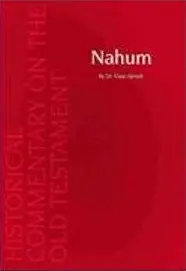

Nahum
in Historical Commentary on the Old Testament
Pages
175 pages
Publisher
Peeters
Published
11/6/1996
ISBN-13
9789024263554
In this commentary an attempt is made to prove that the book of Nahum was written in Jerusalem, ca. 660 BCE, by a talented, faithful royal scribe. He used the pseudonym Nahum as an indication of his purpose: to encourage the people of Judah groaning under the tyranny of the Assyrians. He took his inspiration from the earlier prophetics of Isaiah and from Psalms, which he probably regularly heard or sang in the temple. He also used his familiarity with the Assyrian literature, especialy with the texts of vassal treaties and royal annals, to express in fitting words the announcement of the downfall of the Assyrian empire symbolized by its capital Niniveh. After the fulfilment of this prediction in 612 BCE the book of Nahum must have become very popular, as it proved clear example of true prophecy. It had much influence upon Habakuk and exilic prophets like the Second Isaiah and Jeremiah, who interpreted its message in the new situation of the Babylonian opprression. Traces of this influence are also found in the literature of the community of Qumran and in the NT.
Collections
This book appears in the following featured collections.
- Ultimate Commentary Collection: OT Technical by John Glynn
- Favorite Advanced OT Commentaries by Jeremy Pierce (parableman)
Reviews
Klaus Spronk's HCOT on Nahum (1996) is one of the few whole-volume commentaries just on this prophet, although several others are schedule to appear in the near future. It is both the most in-depth commentary on this book to appear in recent years and the most recent in-depth commentary in publication. It therefore probably counts as the academic standard for the moment, although I suspect that will change as it gains more competitors.
I find the format of this series especially difficult to navigate. I like it even less than the awful WBC format. It's akin to the terrible format of Brevard Childs's otherwise excellent commentary on Exodus, discussing matters in several sections that make it very difficult to figure out where to look to see the author's thoughts on some very particular matter. Even worse is the lack of an author index. It is thus very hard to use as a reference work, even though it's of such detail that only scholars are likely to want to read it straight through. Each section beings with a very brief summary of the passage's message and the historical interpretation of that message. He then gives what the series calls a scholarly exposition, with an emphasis on structural issues (a bit too much and with a bit too much certainty for my tastes) and literary and poetic features. An exegesis section then follows, which directly deals with the Hebrew.
The series is intended to be of help to both scholars and less-trained Bible teaches, but it will serve the latter group much less well. Spronk helpfully insists on taking Nahum not to be just a foaming-at-the-mouth prophet of vengeance. He recognizes that God's anger in Nahum results from God's compassion on Israel and moral outrage at oppression and injustice. He generally treats the final form of the book, but he is willing to conjecture that certain parts of the book are interpolations and additions.
[Full Review]
Kampen: Kok Pharos Publishing House, 1997. Pp. xxi + 153, Cloth, No Price Available, ISBN 9024263557. John L. McLaughlin Wheeling Jesuit University Wheeling, WV 26003 This volume follows the approach of the recently inaugurated Historical Commentary on the Old Testament series by seeking to place the book of Nahum both within its own historical context and within the history of its interpretation. Spronk attributes the prophetic book to an author writing ca. 650 BCE, who used the pseudonym Nahum to indicate his intention to "comfort" the Israelites in the face of Assyrian oppression. He appears to have drawn upon Assyrian royal texts, Israelite cultic literature, especially the Psalms, and the words of Isaiah of Jerusalem. The book of Nahum, in turn, influenced Habbakuk, Second Isaiah, Jeremiah, later proto-apocalyptic literature, Qumran material, and the New Testament. It was incorporated into its current location in the middle section of the book of the Twelve in imitation of the larger prophetic books, with their sections dealing with woe to Israel, woe to the nations, and comfort for Israel. But contrary to traditional views which saw the book as simply one of vengeance, Spronk interprets it in terms of Yahweh's anger at injustice and oppression of the weak. The greatest strength of this volume is the detailed attention to literary and structural details. Spronk divides the prophetic book into three "cantos" 1:1-11, 1:12-2:9-14; and 3:1-19, with the latter two further divided into three "subcantos" each. The (sub)cantos are divided into "canticles" which are then broken into "strophes." The second and third cantos both have shorter middle canticles while all three are linked by repeated keywords. In addition, Spronk sees a chiasm (mirror pattern) in 2:1-3:18 as well as an overlapping linear sequence of parallels in 2:4-8 and 3:1-5. Not everyone will be convinced by every proposal (for example, the mirror pattern alternates between semantic and exact lexical correspondences and does not incorporate 3:1-4) but nonetheless, Spronk is correct in his assessment that there is "an intricate web of cross-references throughout the book" (p. 5).
[Full Review]


